Year 7 Substitution Worksheets
Substituting into Expressions (A)
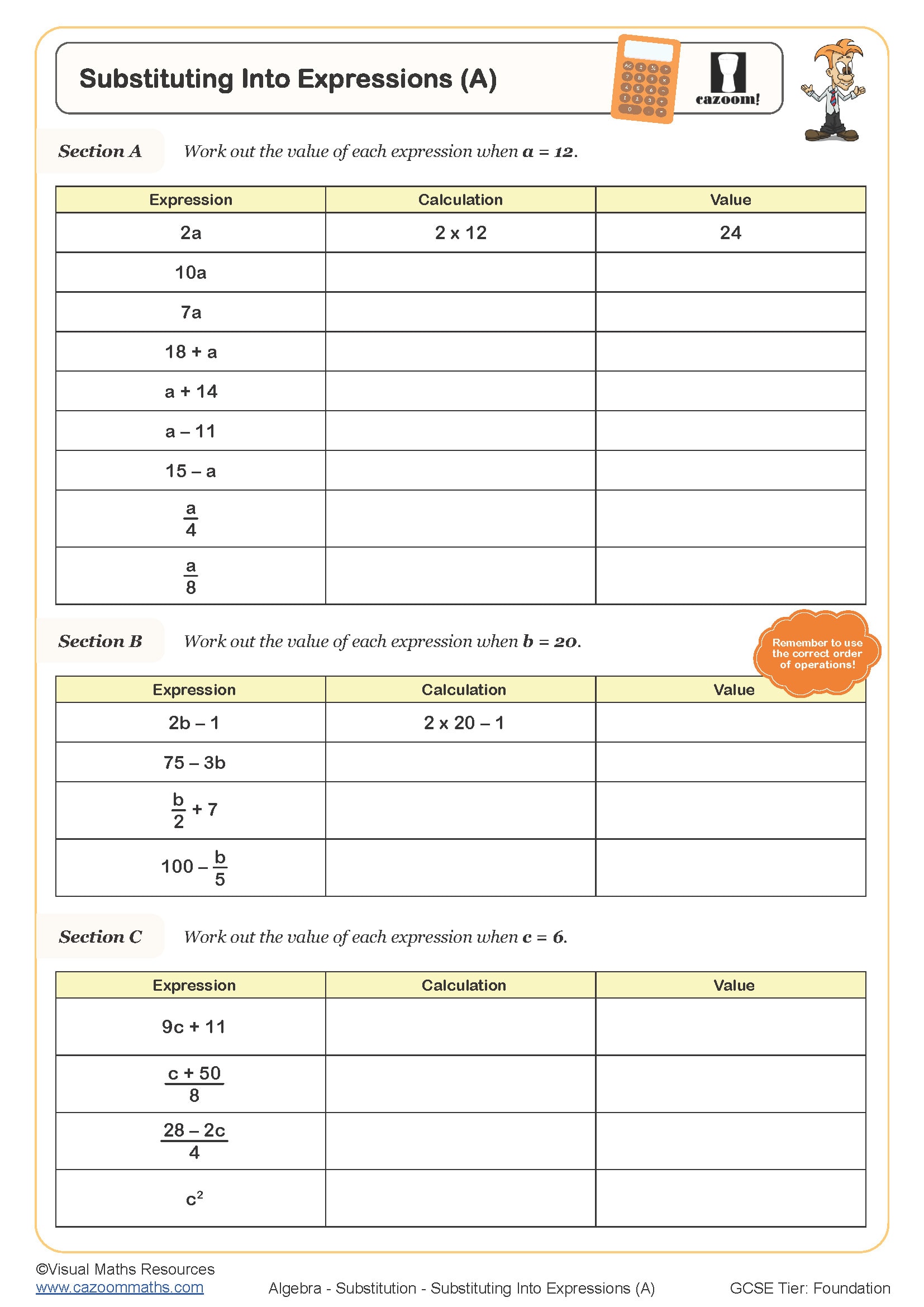
Substituting into Expressions (B)
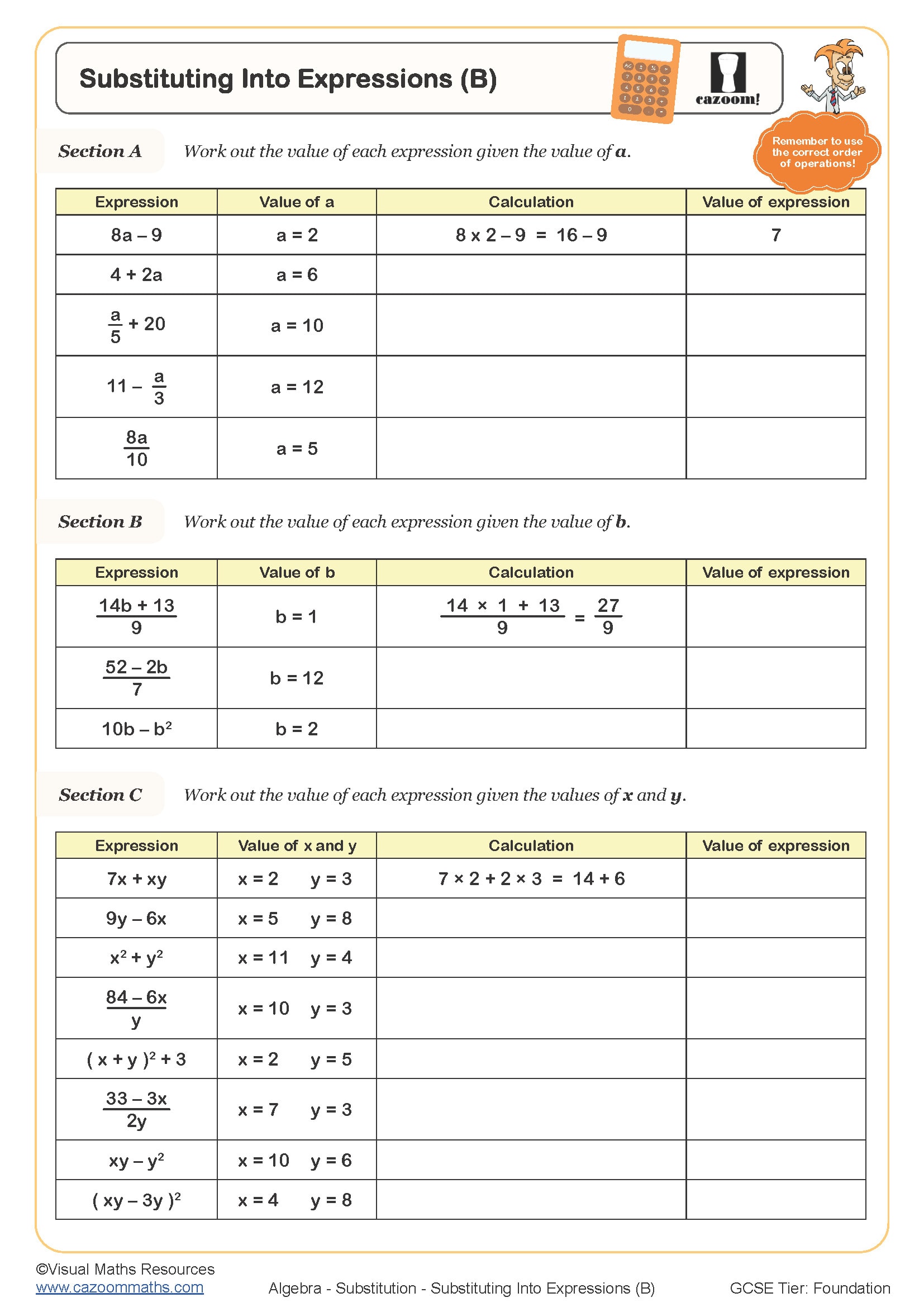
Substituting into Expressions using Negative Numbers
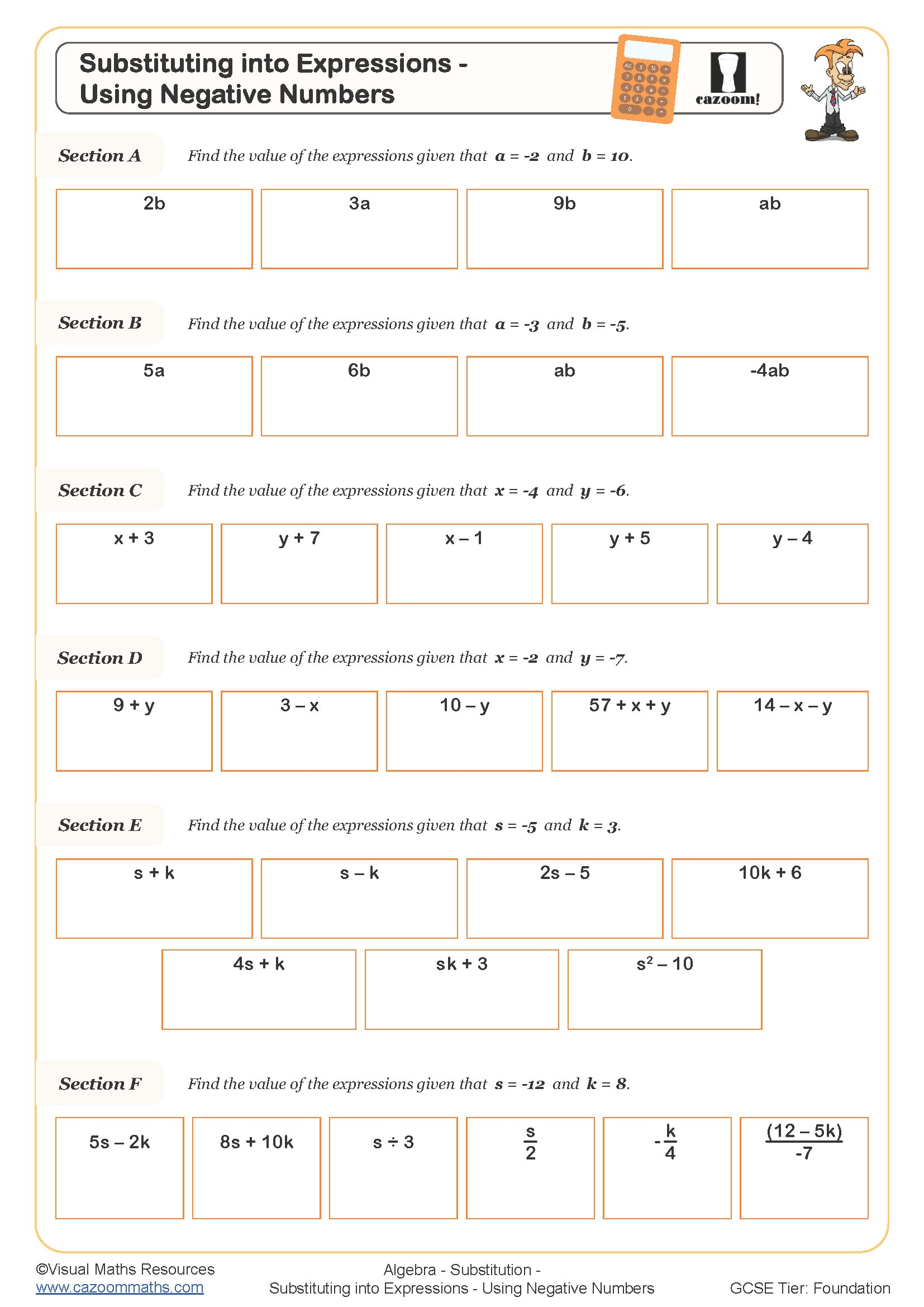
Substituting into Formulae (A) (With Clues)
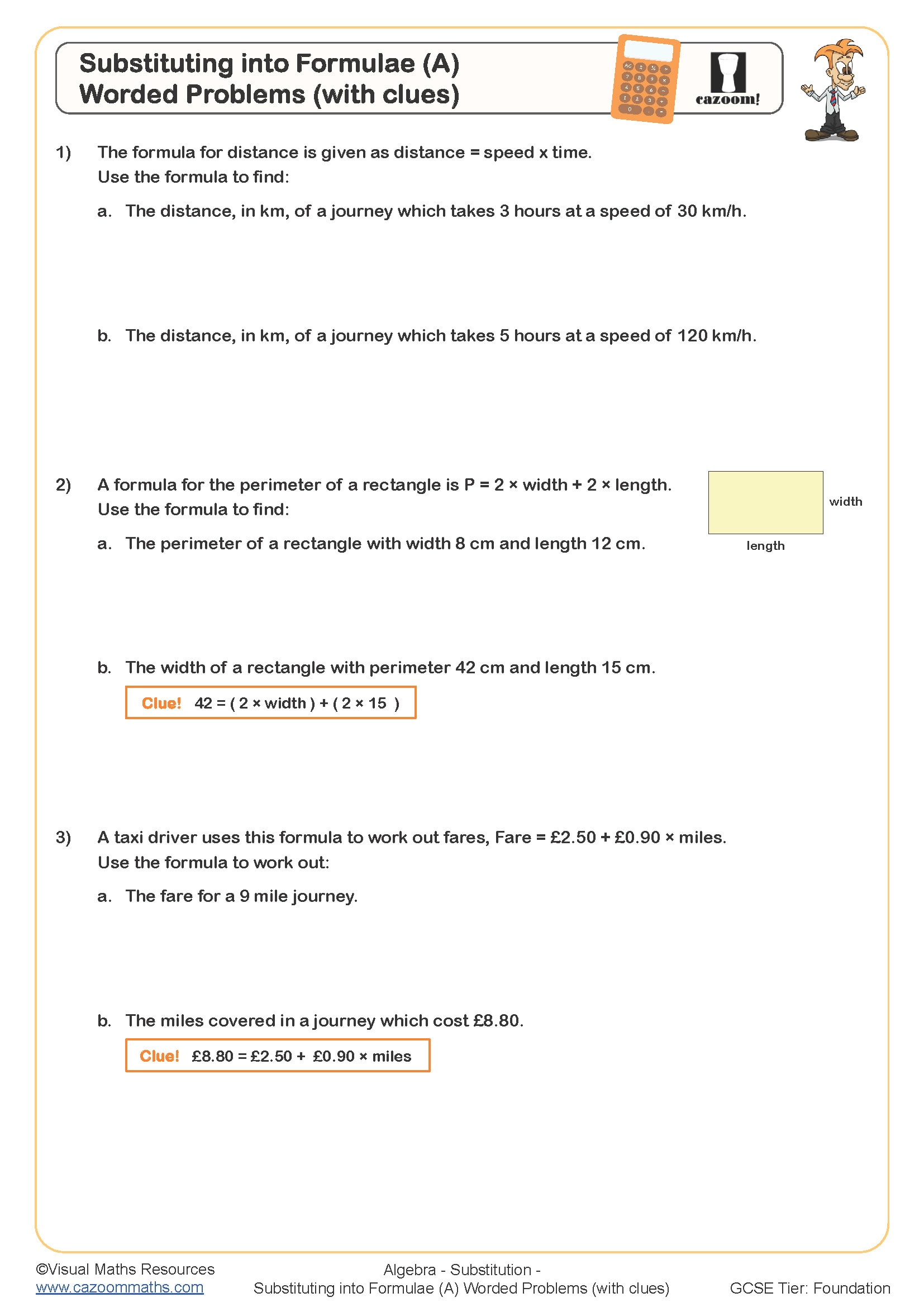
Substituting into Formulae (A) Word Problems
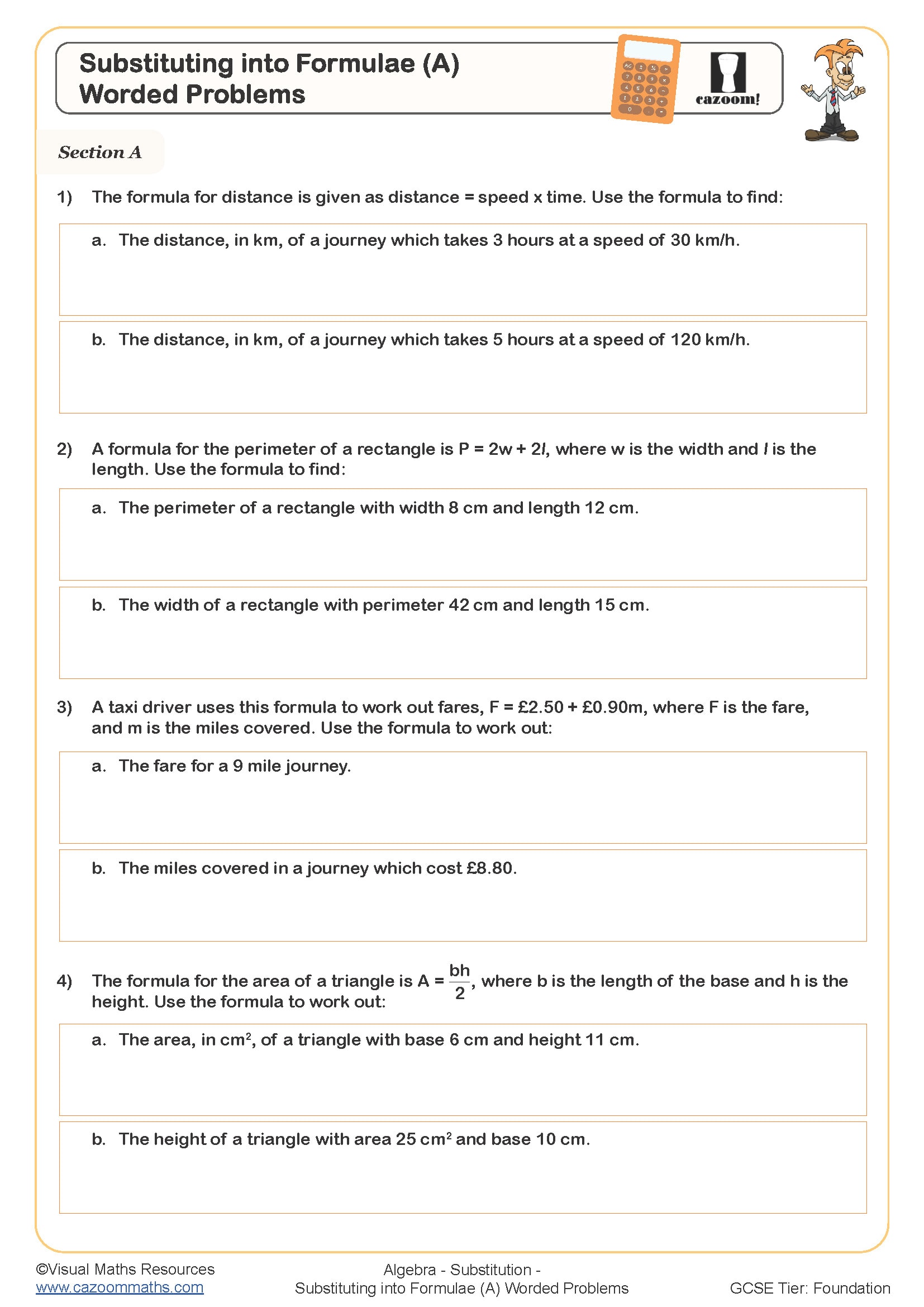
Substitution - Using Algebra Tiles
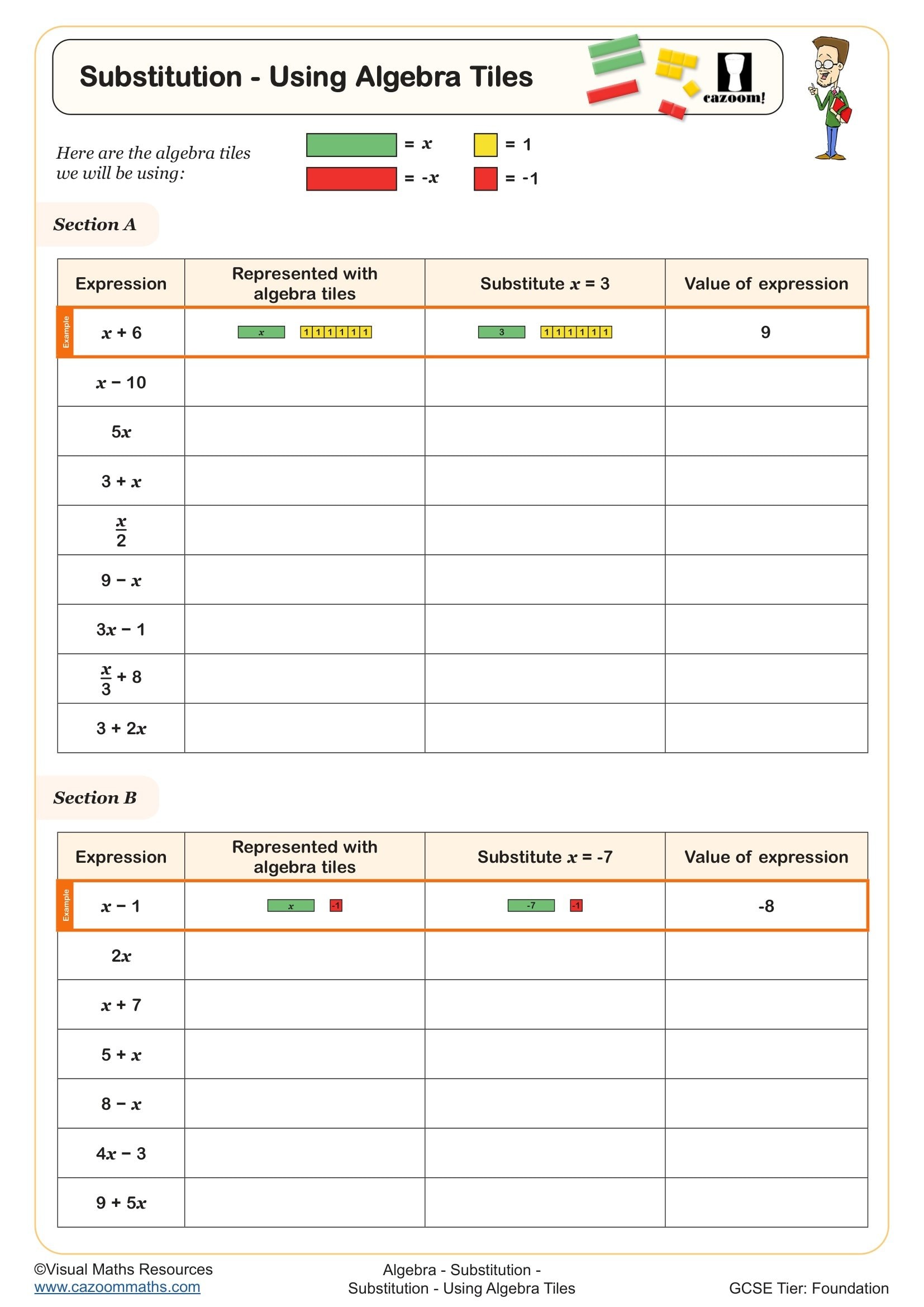
Substitution Builder (A)
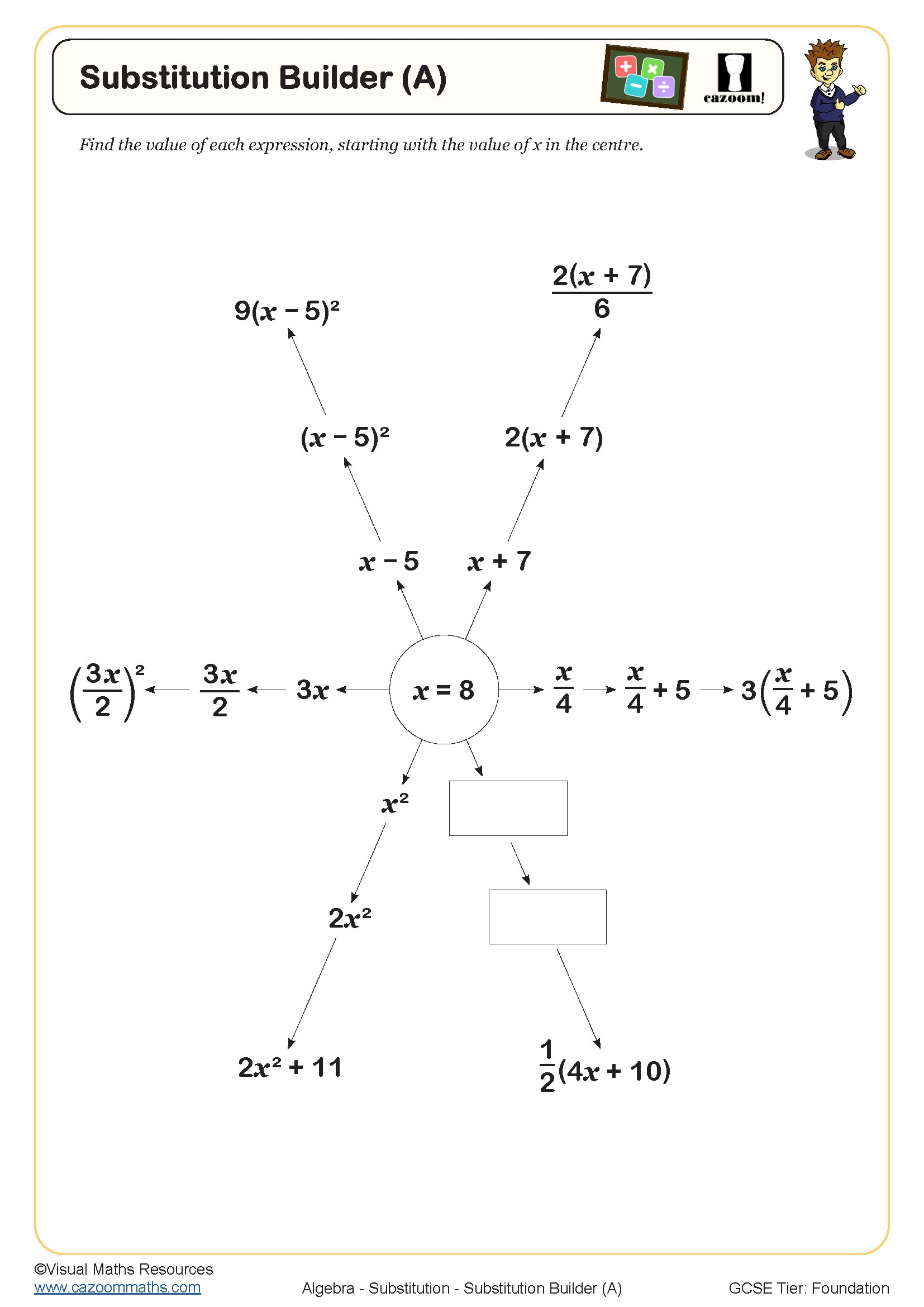
Substitution Builder (B)
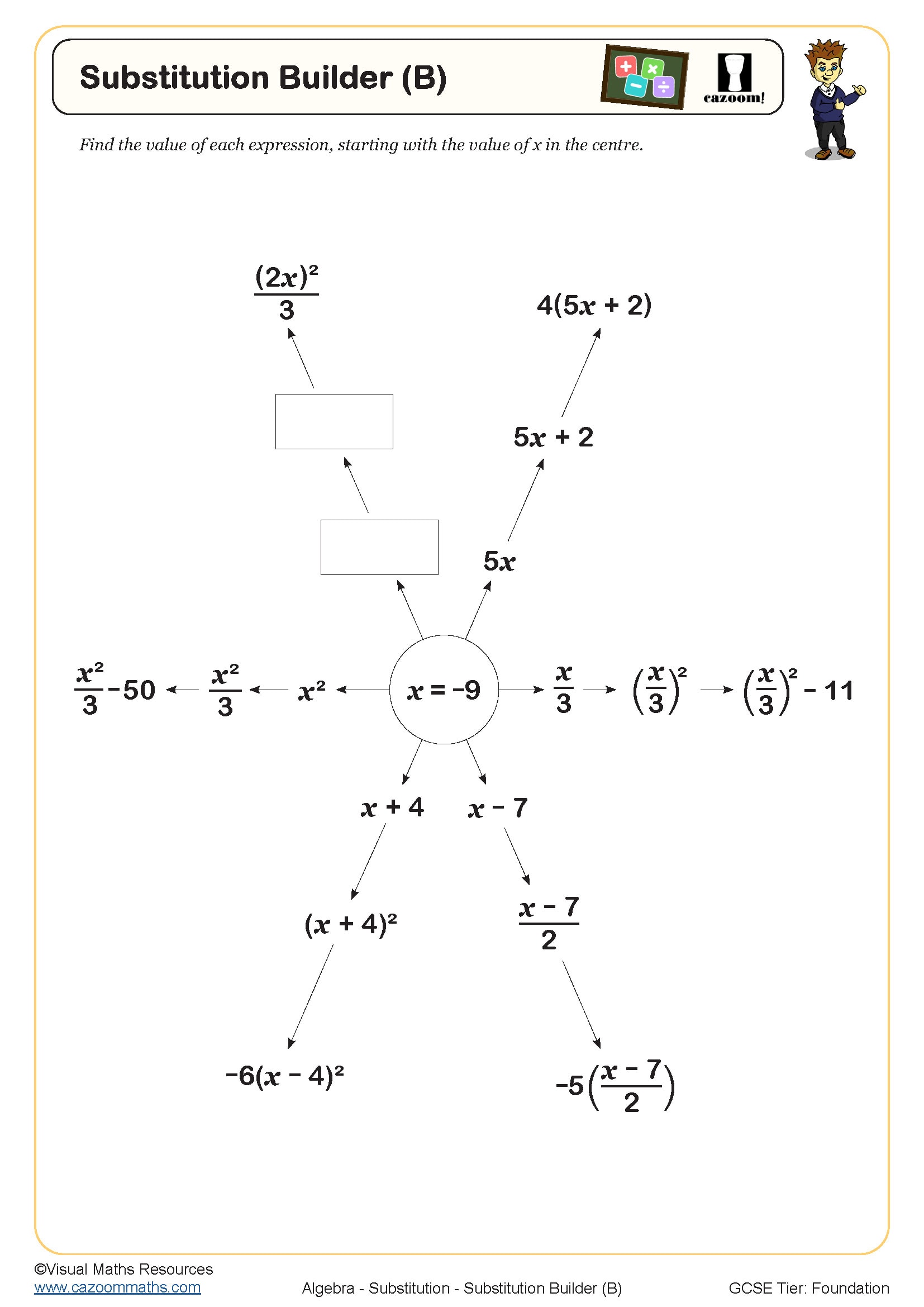
Substitution Builder (C)
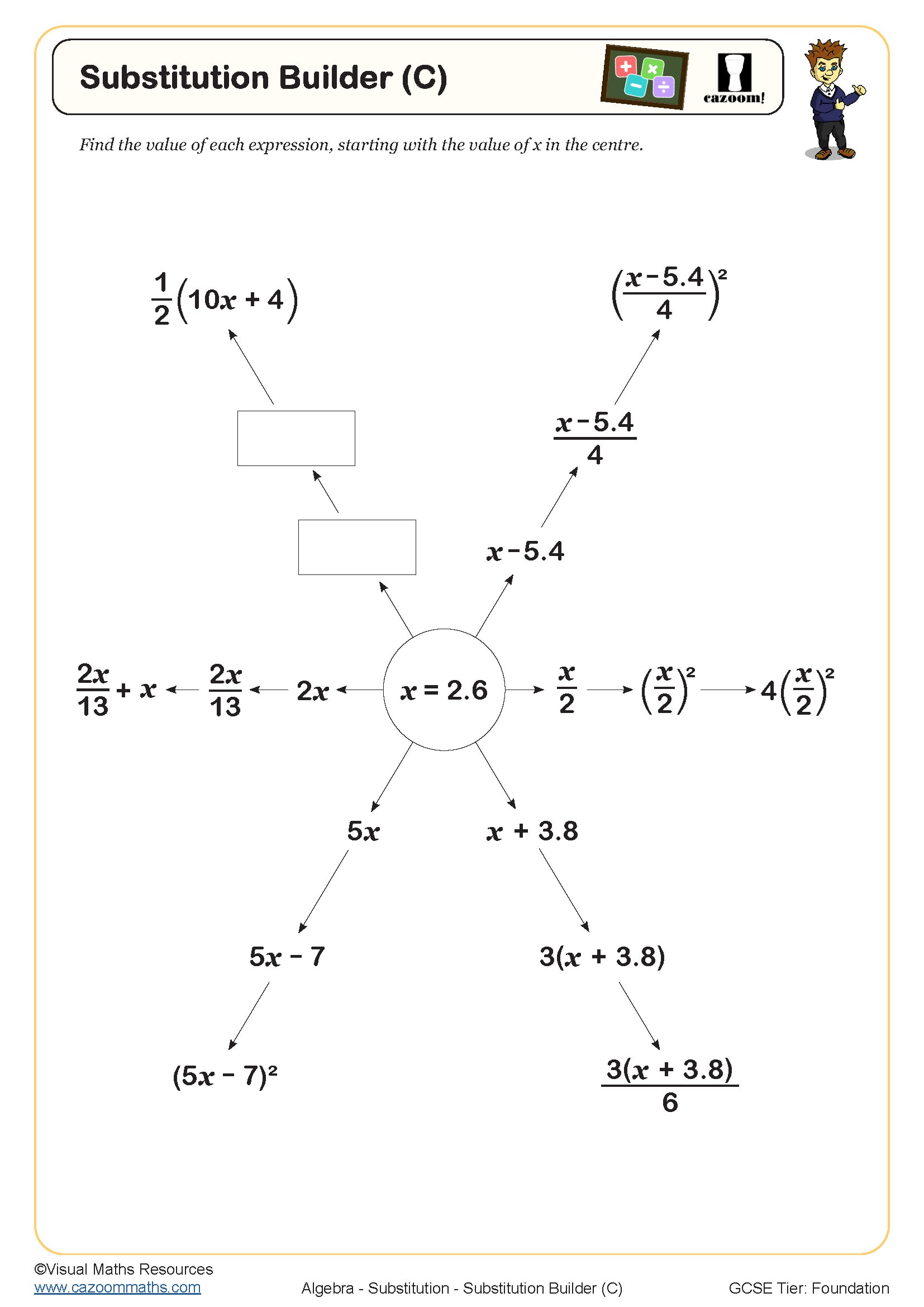
Substitution Magic Squares
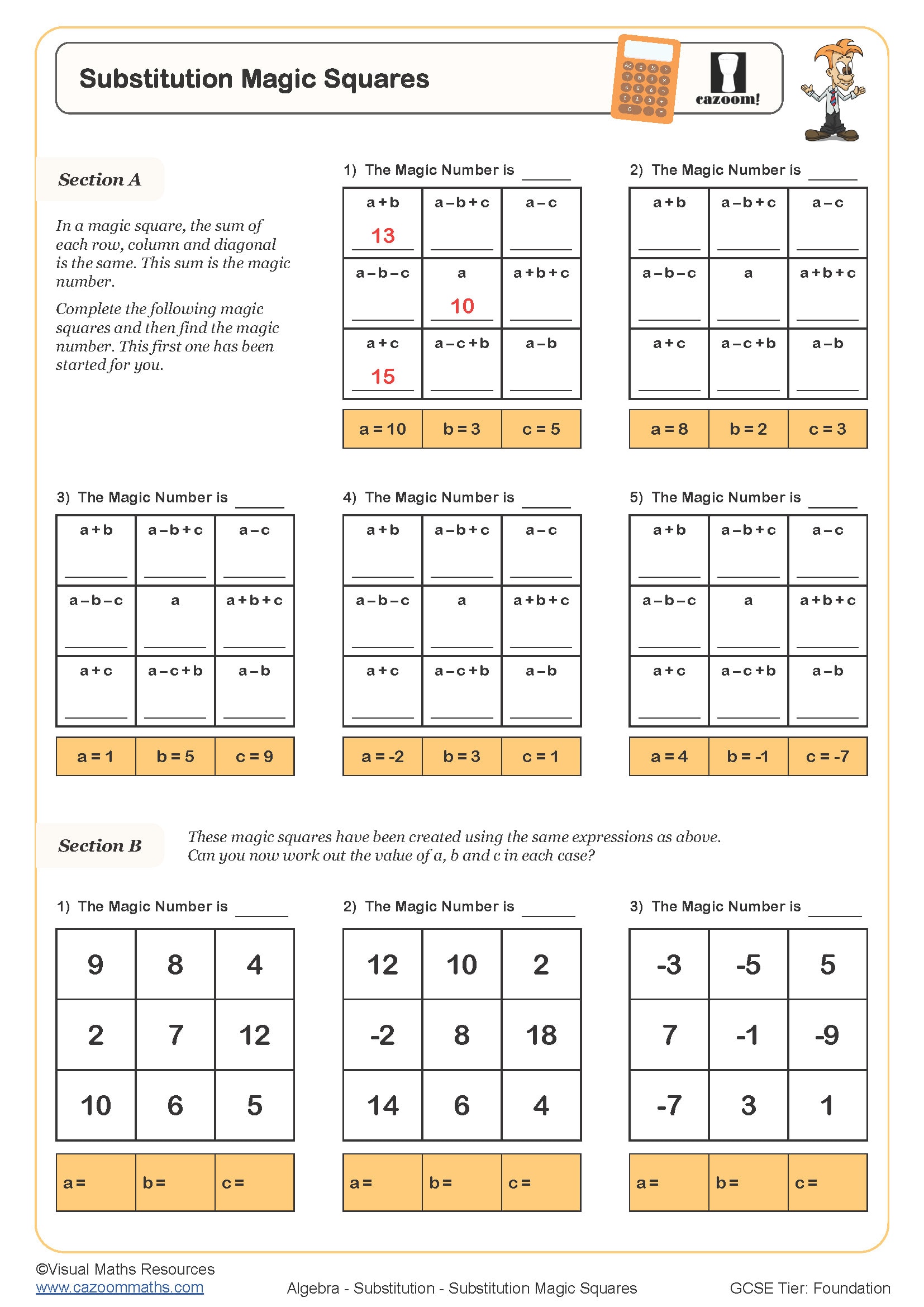
Struggling With Substitutions? These Algebra Resources Will Help You!
The first step in comprehending how algebra represents generalised number patterns and relationships is substitution. Since students are still open to abstract mathematical representations and have adequate arithmetic fluency, year seven is the best developmental stage for applying this ability. In all areas of mathematics, the process of substituting values for variables teaches accuracy and focus. The mental discipline needed to accurately follow multi-step procedures is developed through regular practice. Performance in formula manipulation, equation solving, and functional relationships across secondary mathematics is directly impacted by substitution success. This fundamental ability opens the way for more complex subjects like simultaneous equations, quadratic expressions, and calculus preparation. Among the specific learning advantages are: Linking algebraic concepts to arithmetic skill creates methodical working techniques, improves understanding of variable representation, and explains the conventions of mathematical notation.
Specific learning benefits include:
• Connects arithmetic skills with algebraic concepts
• Develops systematic working methods
• Strengthens understanding of variable representation
• Introduces mathematical notation conventions
• Establishes order of operations mastery
• Enhances logical sequencing abilities
• Supports pattern recognition skills
Full Topic List: What’s Included in This Worksheet Pack
These worksheets progress from basic single-variable replacements through to complex expressions involving multiple operations and negative numbers. Each topic includes step-by-step demonstrations showing exactly how values replace letters, with complete working visible throughout. The careful sequencing prevents common errors like sign mistakes or operation mix-ups from becoming embedded habits. Visual representations and contextual problems help students grasp the purpose behind variable manipulation.
The core skills covered include:
• Single-variable substitution – replacing letters with given values
• Expression evaluation – following the order of operations correctly
• Substituting negative numbers – managing signs and brackets carefully
• Multiple variable expressions – tracking different letter values simultaneously
• Index notation – substituting into expressions with powers
• Substitution into formulae – connecting to real-world contexts
• Brackets and substitution – expanding then evaluating systematically
• Decimal and fraction substitution – maintaining accuracy with different number types
• Checking answers – using substitution to verify solutions
Traditional Lessons or Worksheets? Why Teachers Prefer Year 7 Substitution Worksheets
With our ready-to-use, printable PDF differentiated content, these materials remove the complexity of preparation and have been tested in classrooms across a range of ability levels. Each worksheet's graduated difficulty allows for mixed-ability instruction without the need for additional resource sets. The thorough answer keys that highlight mathematical thought processes and pinpoint the precise locations of misconceptions are especially appreciated by teachers. Because of the consistent layout, there is less cognitive load and more time to concentrate on mathematical reasoning rather than interpreting instructions. Individual progress is effectively tracked through frequent formative checkpoints incorporated throughout. Sections on error analysis point out common errors before they become ingrained. Printer-friendly formats, unambiguous marking schemes, and extension challenges for early finishers are examples of time-saving features. Both traditional and technology-enhanced teaching methods are supported by the resources' seamless integration with interactive whiteboards and digital platforms.
Practical Applications of Substitution Beyond the Classroom
Substitution skills underpin countless everyday calculations, from recipe adjustments to journey planning. Understanding how to work with variables opens doors to scientific thinking and problem-solving across disciplines.
• Science experiments – calculating results using formulae for speed, density, resistance
• Technology and coding – understanding variables in programming basics
• Sports performance – working out scores, averages, and statistics
• Personal finance – calculating interest, savings goals, pocket money budgets
• Design projects – scaling measurements, working with ratios and proportions
• Gaming strategies – understanding point systems and level progression
• Journey planning – calculating distances, times, and costs using formulae
• DIY and crafts – adjusting quantities, converting measurements, scaling patterns